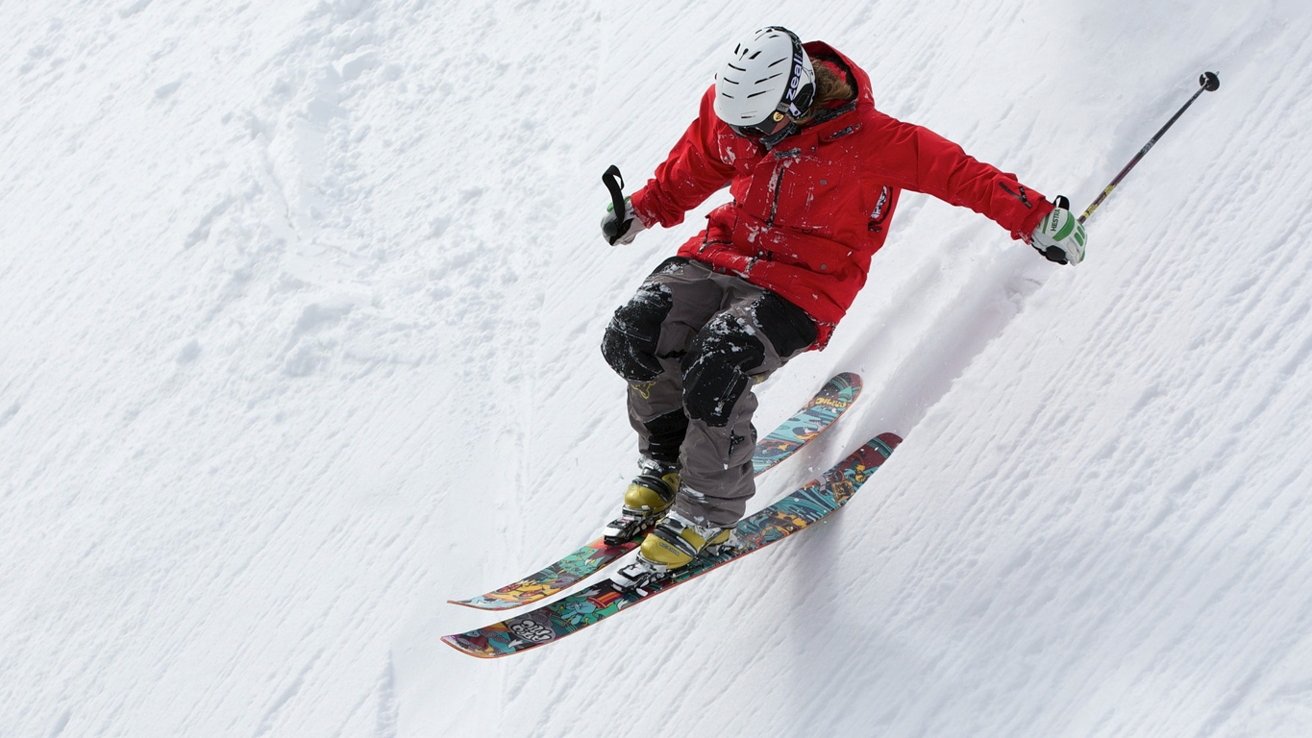Skiers triggering false Crash Detection alerts on iPhone 14, Apple Watch
Emergency dispatchers near ski resorts are seeing an influx of Crash Detection alerts sent by iPhone and Apple Watches -- and they want the skiers to leave them on.

Image Credit: Up-Free via Pixabay
In October, we learned that rollercoasters were capable of setting off the new iPhones and Apple Watch Crash Detection feature. Now, it seems like skiing can, too.
Summit County, Utah, dispatchers are getting between three to five Apple crash alerts per day, according to Summit County Dispatch Center supervisor Suzie Butterfield.
Most of the time, the skier doesn't even know that the alert went out.
"They won't respond to you when you first start talking because I don't even think they knew that they did it, but on callback ... they're usually like, 'Oh I'm sorry, I was skiing. Everything's fine,'" Butterfield told KSL, spotted by MacRumors.
Despite the pocket dials, Butterfield sees the technology as an important tool, not an annoyance.
"Somebody could ski and hit a tree and be knocked unconscious and not be visible to other skiers," she said.
Crash detection is turned on by default, and Summit County says it should stay that way.
"We do not want you to turn the feature off," Butterfield said. "We would rather have you be safe. We don't mind taking that call because if something really did happen, we want to be able to get to you."
Skiers aren't the only ones triggering Crash Detection, either. In October, 911 dispatch centers near amusement parks had reported an influx in calls due to Apple devices misinterpreting ride movements and noise as collisions.
Read on AppleInsider

Image Credit: Up-Free via Pixabay
In October, we learned that rollercoasters were capable of setting off the new iPhones and Apple Watch Crash Detection feature. Now, it seems like skiing can, too.
Summit County, Utah, dispatchers are getting between three to five Apple crash alerts per day, according to Summit County Dispatch Center supervisor Suzie Butterfield.
Most of the time, the skier doesn't even know that the alert went out.
"They won't respond to you when you first start talking because I don't even think they knew that they did it, but on callback ... they're usually like, 'Oh I'm sorry, I was skiing. Everything's fine,'" Butterfield told KSL, spotted by MacRumors.
Despite the pocket dials, Butterfield sees the technology as an important tool, not an annoyance.
"Somebody could ski and hit a tree and be knocked unconscious and not be visible to other skiers," she said.
Crash detection is turned on by default, and Summit County says it should stay that way.
"We do not want you to turn the feature off," Butterfield said. "We would rather have you be safe. We don't mind taking that call because if something really did happen, we want to be able to get to you."
Skiers aren't the only ones triggering Crash Detection, either. In October, 911 dispatch centers near amusement parks had reported an influx in calls due to Apple devices misinterpreting ride movements and noise as collisions.
Read on AppleInsider

Comments
From these reports, it seems the crash detection system does not consider continuing sudden changes within a short duration of time of the initial detection in order to assess whether it is in fact a real crash.
Perhaps a simple adjustment to the detection algorithm is all that would be required, but I suppose it is better to be safe than sorry and the system should stay as is, as long as emergency responders like the Summit County folks are OK with getting these false alarms and they don't start ignoring them as if the system is "crying wolf."
Unlike my expectation of the response from "influencers" on the various social media platforms.